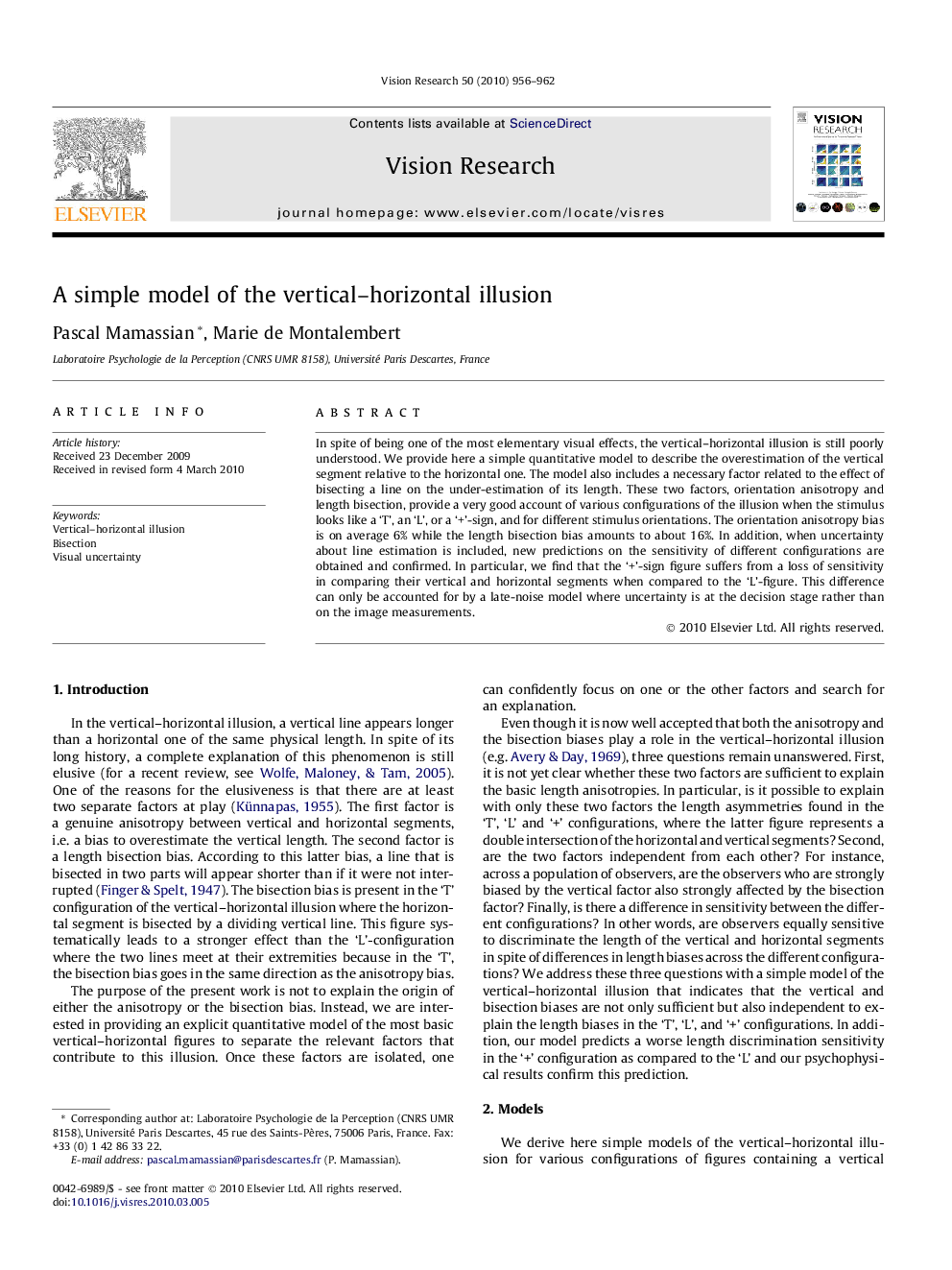| کد مقاله | کد نشریه | سال انتشار | مقاله انگلیسی | نسخه تمام متن |
|---|---|---|---|---|
| 4034825 | 1263485 | 2010 | 7 صفحه PDF | دانلود رایگان |

In spite of being one of the most elementary visual effects, the vertical–horizontal illusion is still poorly understood. We provide here a simple quantitative model to describe the overestimation of the vertical segment relative to the horizontal one. The model also includes a necessary factor related to the effect of bisecting a line on the under-estimation of its length. These two factors, orientation anisotropy and length bisection, provide a very good account of various configurations of the illusion when the stimulus looks like a ‘T’, an ‘L’, or a ‘+’-sign, and for different stimulus orientations. The orientation anisotropy bias is on average 6% while the length bisection bias amounts to about 16%. In addition, when uncertainty about line estimation is included, new predictions on the sensitivity of different configurations are obtained and confirmed. In particular, we find that the ‘+’-sign figure suffers from a loss of sensitivity in comparing their vertical and horizontal segments when compared to the ‘L’-figure. This difference can only be accounted for by a late-noise model where uncertainty is at the decision stage rather than on the image measurements.
Journal: Vision Research - Volume 50, Issue 10, 12 May 2010, Pages 956–962